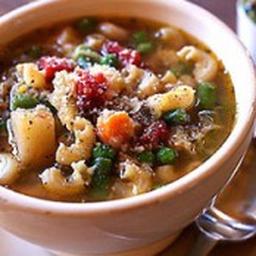
Sometimes a small change can make a big impact. For example, I now hang my keys in the same place when I enter the house. By making that one small tweak to my routine, I saved myself time and angst from the dreaded daily “where are my keys?” panic.
We decided to make a small change to our dinner conversation.
We now ask everyone in the family to say one thing they’re grateful for. The first day , our daughter said that she was grateful that she saw her friend laugh so hard that chocolate milk spurted out of her mouth. And our son was grateful that I packed a different kind of sandwich for once! Another day, I kid you not, the responses were “I’m grateful my hair looked good today” and “I’m grateful I got to cut a frog open” . But we are getting better about identifying and expressing our gratitude. We try to encourage further exploration and discussion. We’re learning to practice gratitude.
Sometimes the discussions are funny and sometimes serious, like when I was grateful I had landed a big client. We talked about how hard this particular client had been to secure, what kind of preparation work I had to do and how persistent I had to be. By the end of the meal, I was grateful that my family celebrated my achievement and understood better my hard work and commitment to my job. The kids are learning to see me as more than “Mom”. We are finding that we’re all focusing more on figuring out what we’re grateful for throughout the day. We’re learning what being grateful means and reaping the benefits.
 Studies show those who practice gratitude are more likely to feel happier and eat healthier. They have less stress and better social interactions and relationships. Practicing gratitude builds resilience to meet the inevitable challenges of life. These are lasting benefits. That’s the kind of impact I want our dinner conversations to have for our family.
Studies show those who practice gratitude are more likely to feel happier and eat healthier. They have less stress and better social interactions and relationships. Practicing gratitude builds resilience to meet the inevitable challenges of life. These are lasting benefits. That’s the kind of impact I want our dinner conversations to have for our family.
- Expressing gratitude can improve your mood.
- Showing gratitude can make you more optimistic.
- Sharing gratitude can improve social bonds.
- Practicing gratitude can improve your physical health.
Our Family Dinner Table Gratitude Rules:
- Everyone gets a turn. This includes the parents. Parents are people too! Plus, it gives us an opportunity to benefit from our own practice of gratitude.
- Rotate order. The last person to share doesn’t always get the most discussion about their experience. It’s not that it is less important, but more about time to get to homework!

- Be supportive. Phrases such as “that’s stupid” or “who cares” are not acceptable. Questions such as, “How did that make you feel?” or “Whose great idea was it?” are supportive and encouraged.
- Special effects are ok. If someone wants to read from an article, share a favorite toy or a school report, that’s super. We are starting to encourage our children to keep a gratitude journal and share what they felt throughout the day. Check out this great resource to get started on your gratitude journal.
- Plan an action. Sometimes one of us mentions a person who could benefit from a kindness. It could be as simple as thanking a teacher or calling their grandmother to say hi. We’ve found that being kind to others is a way to practice gratitude. One week our children said they wanted to help make casseroles to donate to an area shelter. They thought that would be kind, I nearly cried with joy and gratefulness.
Family Friendly Recipes!
Search for more delightful recipes in your DinnerTime Recipe Box.
Use the filter function (found on right of your DinnerTime Recipe Box search) to find desserts, main dish, side dishes etc.



